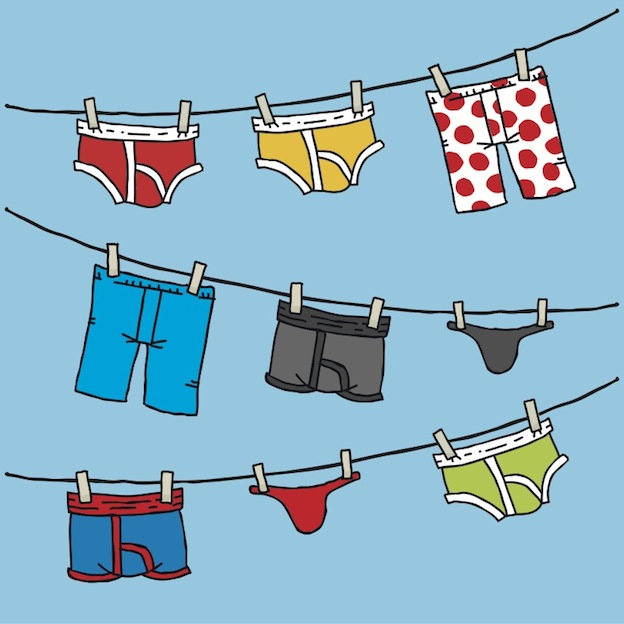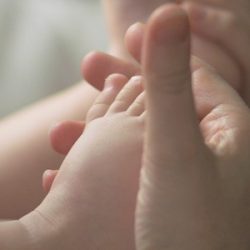SingaporeMotherhood | Parenting
October 2014
Circumcision: To Cut Or Not To Cut?

Not counting those who do it for religious reasons, circumcision is fairly common in Singapore. According to the Ministry of Health website, there were 1,870 circumcision procedures performed in hospitals in Singapore between 1 July 2013 and 30 June this year. This number does not take into account the cases handled by private doctors. Indeed, one pediatric urologist told us that he performs up to 10 of them during the school holidays!
Circumcision is recommended for children with specific medical issues.
[banner][/banner]
Why Do It?
“Circumcision is the removal of the part of the prepuce (foreskin) covering the glans penis (the rounded head of the penis),” explains Dr Joyce Chua, a Specialist in Paediatric Surgery at the Raffles Children’s Centre.
“In doing so, the glans penis and the urinary meatus (the opening of the urethra) is exposed permanently. In children with known congenital urological anomalies, early circumcision may reduce the risks of recurrent urinary tract infections.
“In children with recurrent infections of the prepuce and the glans penis, it is believed that the tight prepuce covering the glans penis results in urinary statis and accumulation of smegma (the lubricant produced in the lining of the foreskin), thereby predisposing the child to recurrent infections of the area.
In pre-teens and pubertal boys, the prepuce should be able to be retracted over the glans penis, if the prepuce remains tight over the glans penis, erections can be painful. Circumcision removes this tight prepuce.
“In boys who are otherwise well and totally asymptomatic, the benefits of routine circumcision do not justify the risks involved.”
When to do it?
For children with congenital urological anomalies and/or recurrent infections, the procedure should be performed sooner rather than later.
“Medically, the timing of circumcision should be determined by the medical indications,” Dr Chua explains. “The optimal age should be after the boys are off diapers. This will reduce the risk of meatal stenosis (narrowing of the urinary meatus) while easing the post-operative care of the child.
Circumcising boys beyond 11 years of age can potentially be more bloody. Dr Chua explains, “This is because the prepuce is thicker and the penis more vascularised (more blood vessels) as the boys approach their teenage years.”
Boys attending regular schools in Singapore undergo yearly health checks by the School Health Service. If, by the age of 11 or 12, a boy is truly phimotic (the foreskin is too tight and can’t be retracted behind the head of the penis), he will be referred for further assessment and possible circumcision.
Are there any Side Effects?
Circumcision is a surgical procedure. When done on babies, local anaesthesia is usually used. General anaesthesia is used on patients who are beyond infancy. And as with any surgical procedure, it has risks.
The most common complications associated with circumcision are bleeding and infection. Side effects related to anaesthesia are possible as well.
“Rarely, circumcision might result in foreskin problems such as it being cut too short or too long, or the foreskin might reattach to the end of the penis, requiring minor surgical repair,” says Dr Eng Soo Kiang, a Family Physician at Unity Family Medicine Clinic.
“Many newborn babies may still have an element of liver immaturity and relative Vitamin K deficiency,” adds Dr Chua. “These factors can increase their risks of excessive bleeding during or after the circumcision. Because of the pain and discomfort following the procedures, some babies may not be able to pass urine normally immediately after the procedure.
Other complications include the narrowing of the urinary meatus (metal stenosis). “While the risk of this is really low, it is a significant complication and may necessitate subsequent repeated surgical procedures to widen this opening,” says Dr Chua.

Scarring too, may occur. This is of more concern amongst baby boys who are still in their diapers. Following circumcision, the glans penis is raw and the diapers will rub against the raw glans, potentially causing more scarring and fibrosis.
“There are also reports that with the glans penis being exposed, subsequent sexual intercourse later in life may be less enjoyable as the glans penis becomes less sensitive.”
But there are, of course, benefits to boys being circumcised, especially with regards to hygiene issues.
Benefits of infant circumcision:
- Prevention of urinary tract infections
- Reduction in risk of inflammatory foreskin conditions such as
- balano-posthitis
- foreskin injuries
- phimosis (where the foreskin can’t be retracted behind the tip of the penis)
- paraphimosis (where the foreskin can’t be pulled over the tip of the penis)
Rest & Recovery
Once the procedure is done, the stitches used around the head of the penis will fall off on their own, usually in about 14 days, says Dr Eng.
After-care instructions vary. “Most surgeons will recommend a Sitz bath (salt water soaking) over the penis. A topical antibiotic cream is also prescribed and can be applied over the cut prepucial edges,” says Dr Chua.
Good hygiene is essential, as is taking care to avoid abrasions. “No rough housing, contact sports, bicycle riding or physical education,” cautions Dr Eng. “Younger children should avoid walkers or straddle toys such as bouncy chairs or rocking horses.”
Most boys are able to wear loose shorts after the first two or three days, and can wear their regular underwear and resume regular activities ten to 14 days after the procedure.
A 37-year-old mum shares her experience of having her son circumcised at the age of six: “He said that he felt pain while peeing and when we checked, we saw some redness at the tip of his penis. We decided to wait and see if it would subside on its own but, unfortunately, it didn’t. We brought him to the doctor, who advised circumcision and referred us to a paediatric urologist, who confirmed his diagnosis.
“Everything was fine until the painkillers wore off. He was given a sterilising solution to wash the wound area with after each pee. This was so painful for him that he stopped drinking so that he would not have to pee. Once, in the middle of the night, I heard him scream and jumped out of bed. He’d gone to pee and was washing up the area with the sterilising solution, screaming in pain each time the liquid touched his skin. It was pretty traumatising for all of us, especially the other males in the family!”
The entrepreneur says that she would not recommend the procedure unless necessary. Her advice for parents whose kids are going through the procedure? “Give him lots of TLC (tender loving care). He will be in great pain. Do not laugh at him even though he’ll be walking funny for several days.”
Glossary of Terms
prepuce : foreskin
glans penis : the rounded head of the penis
urinary meatus : the opening of the urethra
balano-posthitis : recurrent infections of the prepuce and the glans penis
smegma : the lubricant produced in the lining of the foreskin
meatal stenosis : narrowing of the urinary meatus
phimotic : when the foreskin is too tight and can’t be retracted behind the head of the penis
paraphimosis : where the foreskin can’t be pulled over the tip of the penis
All content from this article, including images, cannot be reproduced without credits or written permission from SingaporeMotherhood.
Follow us on Facebook, Instagram, and Telegram for the latest article and promotion updates.





